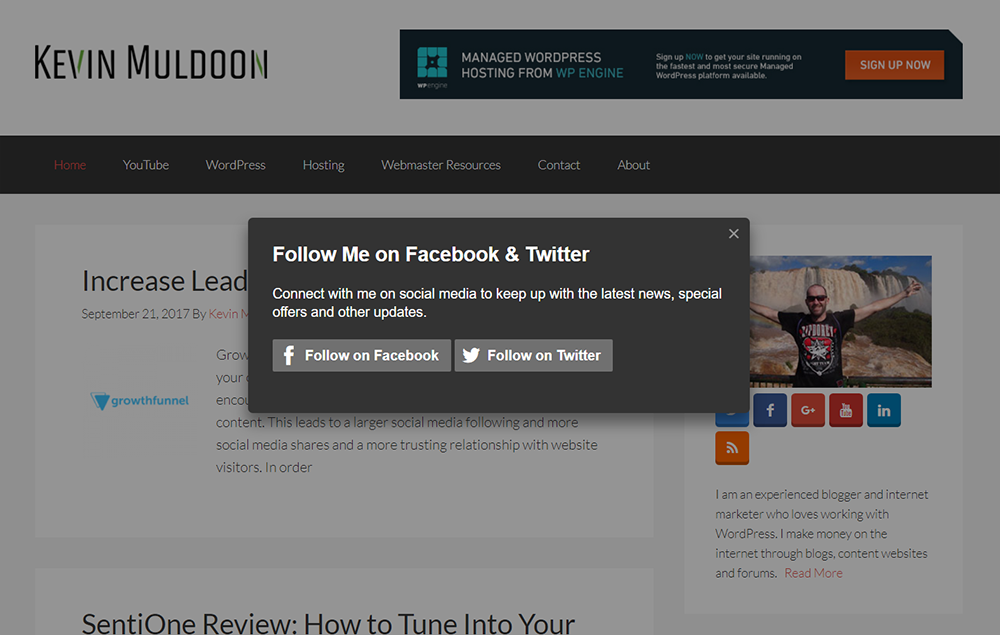GetSiteControl is an online service that allows you to add easily add widgets to your website. They offer subscription forms, contact forms, chat widgets, social media integration, and more.
You can use the website free of charge, however two affordable premium plans are available that offer more features.
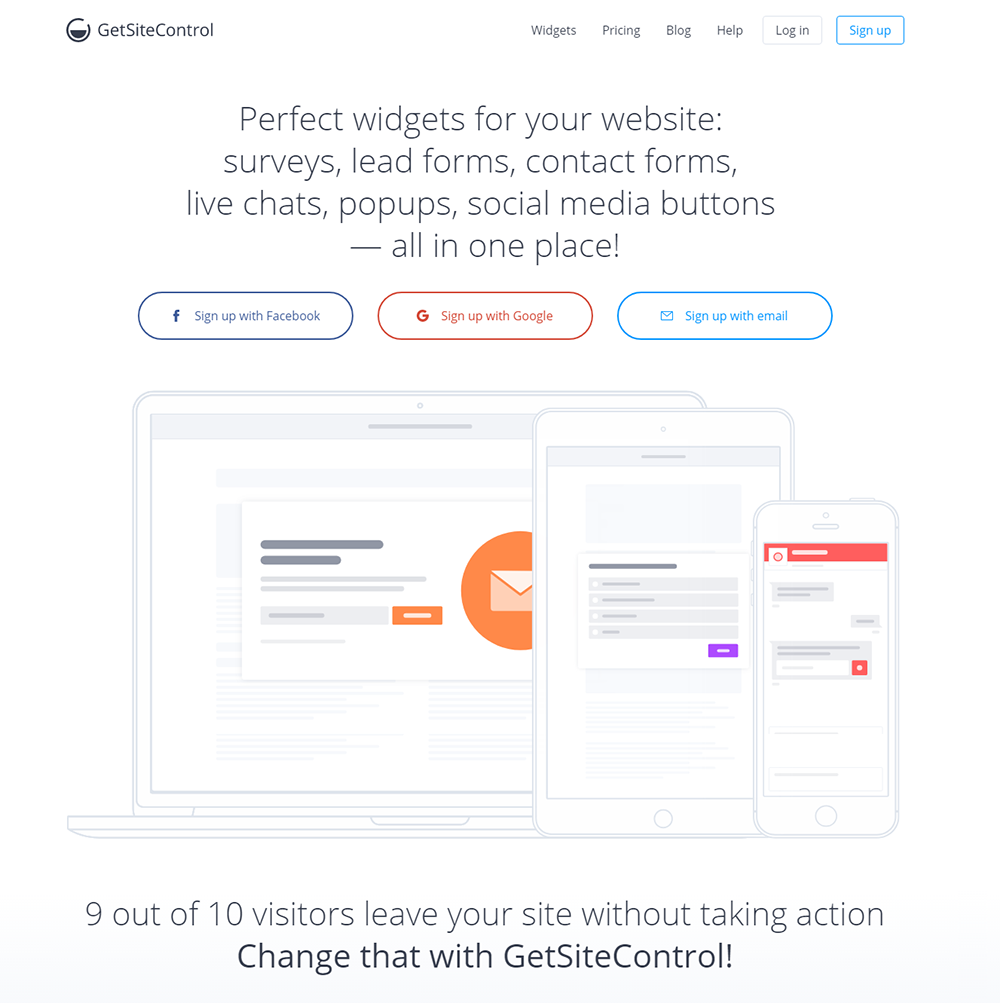
I signed up to GetSiteControl to get a better understanding of what the service offered.
I hope you enjoy the review.
The GetSiteControl Widgets
A total of seven widgets are available with GetSiteControl and these widgets can be placed in a total of nine different positions on your website.
The beauty of the widget system is that widgets can be displayed anywhere. You can display forms in bars, pop ups, sliding boxes, floating menus, and more.
You do not have to restrict yourself to the traditional positions either. For example, if you prefer, you can display your social media follow links in a pop up box and display your subscription form at the top of each page in a bar.

All widgets are responsive so look great on mobile devices. Smart trigger functionality allows you to display widgets once a user starts or stops scrolling on the page, after a defined period of time, or on a date time, day, or date of the week. Popups can also be triggered when a user exists the page.
You can specify exactly which website visitors are shown widgets by targeted visitors from a particular country, device, browser, operating system, IP range, or traffic source. Alternatively, you can choose to display messages to either new visitors or returning visitors. Widgets can also be displayed on selected pages only.
There is support for Google Analytics to help you analyse everything and you can test the success of particular widget setups using A/B testing.
Subscribe Widget
The subscribe widget will help you build up your email list and help you generate leads.
The subscription form can be integrated with a wide number of email marketing services. This includes MailChimp, AWeber, Constant Contact, Campaign Monitor, ActiveCampaign, Mad Mimi, GetResponse, MailerLite, iContact, ConvertKit, VerticalResponse, Mailjet, Drip, and EasySendy.
Subscribers can be sent to a thank you page after completing the subscription form. This is useful for giving them a bonus or simply thanking them for signing up. A custom message can also be sent using their autoresponder feature.

Contact Widget
The contact widget provides visitors with a user-friendly way of contacting you and providing feedback.
The widget integrates with the same email marketing services as the subscription message and allows you to direct those who complete the form to a thank you page.
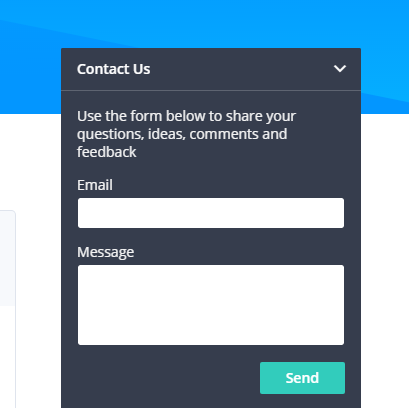
Promo Widget
If you want to grab the attention of visitors, you may want to use the promo widget. It can be used to drive traffic to announcements, sales pages, and lead generation pages.
A/B testing will help you see which banners are converting the best.

Survey Widget
To help understand the needs of customers and visitors, try the survey widget. It can be used to encourage engagement or get important feedback from users.
Like the subscription and contact widgets, the plugin integrates with over a dozen popular email marketing services.
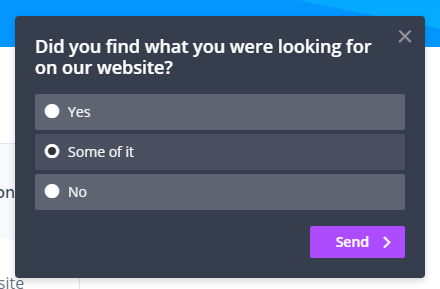
Follow Widget
The follow widget links directly to your social media accounts such as Twitter, Facebook, and Google+.

Share Widget
The share widget can help increase shares of your key content. Increased social media shares can also lead to a better ranking in the search engines.

Chat Widget
The chat widget lets you chat to customers and visitors in real-time. It can be placed in four different positions at the bottom of the page.
The widget seamlessly integrates with Slack which means that you can view conversions on your desktop, tablet, or mobile.
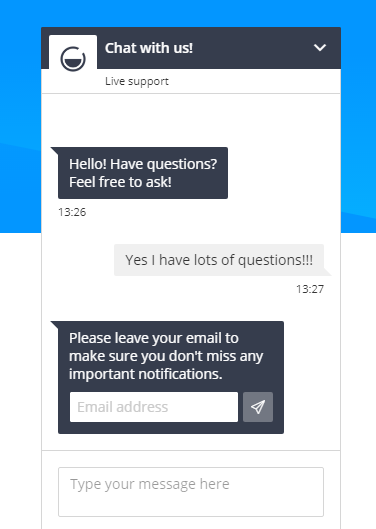
Setting Up GetSiteControl
You can sign up to GetSiteControl easily using your Facebook or Google account. Alternatively, you can just enter your name, email address, and desired password.

Once you have signed up, you will be sent an email that advises you of the code you need to add before the closing body tag on your website in order to display widgets. The email also links to their step by step instruction guide.
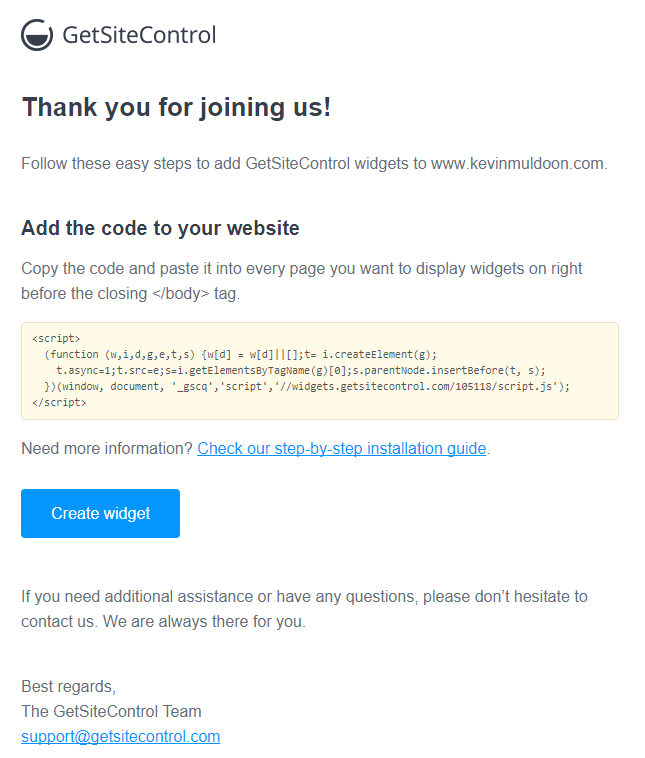
When you log into your account you will be reminded that you need to add the code to your website before displaying any widgets.
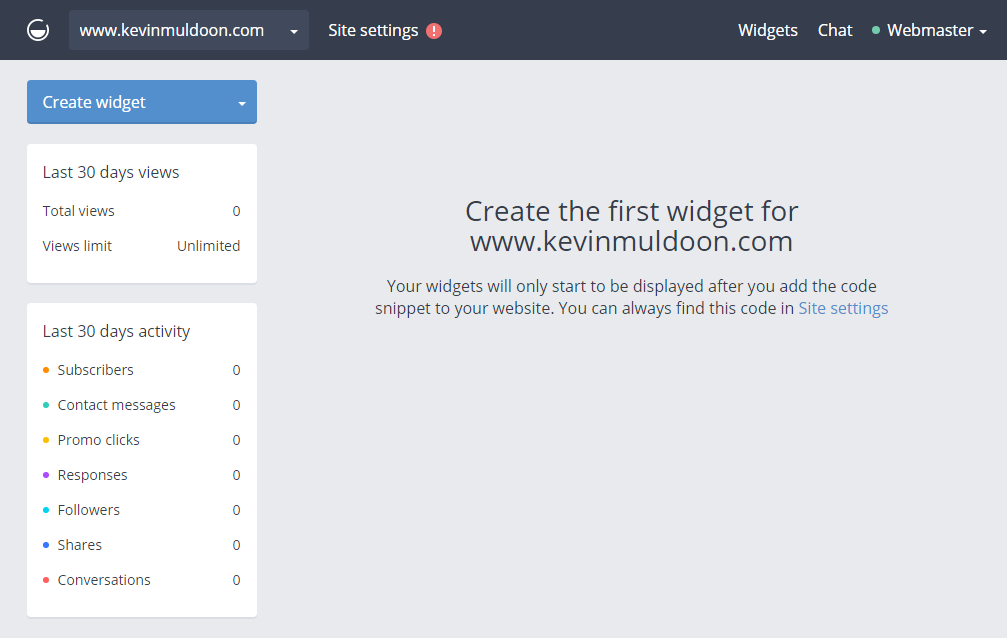
If you click on the site settings link at the top of the page you will be taken to the general site settings page. On this page you can change your main website and enable or disable Google Analytics.
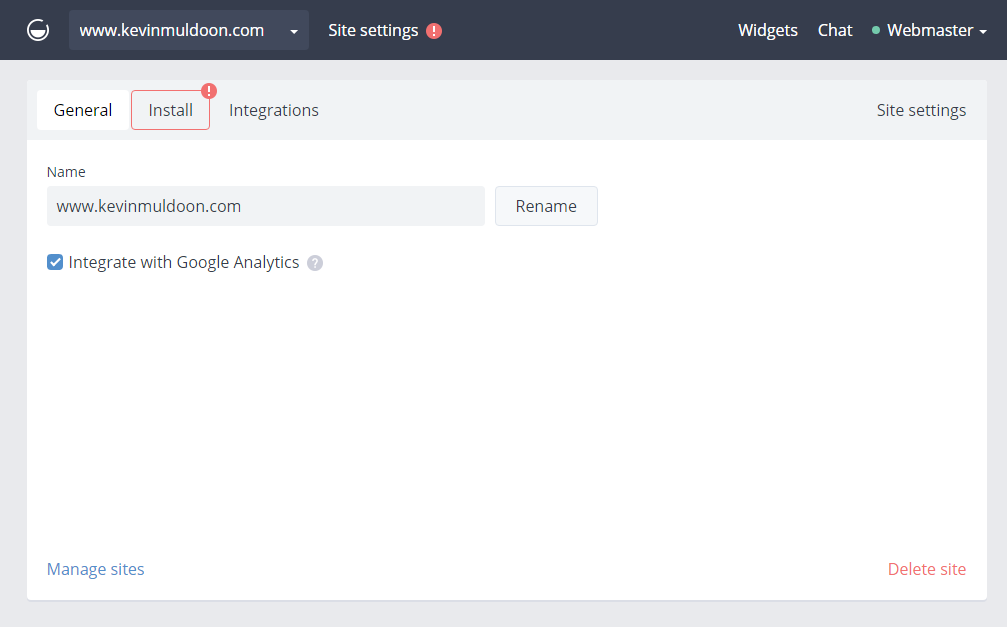
Clicking on the manage sites link at the bottom of the page takes you to a page where you an activate websites, deactivate websites, delete websites, and add new websites. You can also download statistics from this page.
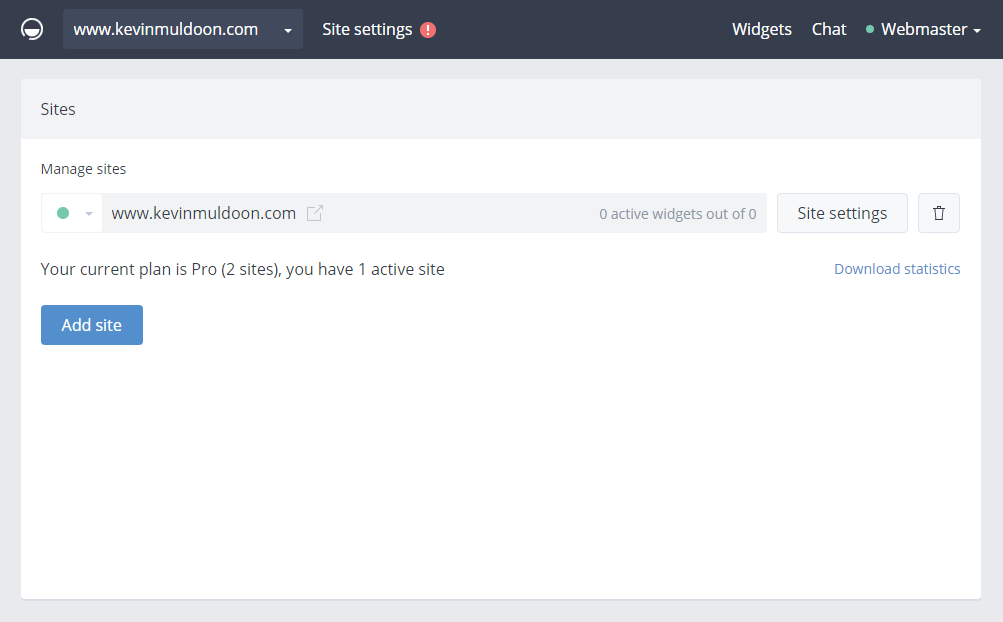
If you have misplaced the integration code, you can view it again in the installation settings page. WordPress users have the option of using the free GetSiteControl WordPress plugin instead of adding the integration code manually.
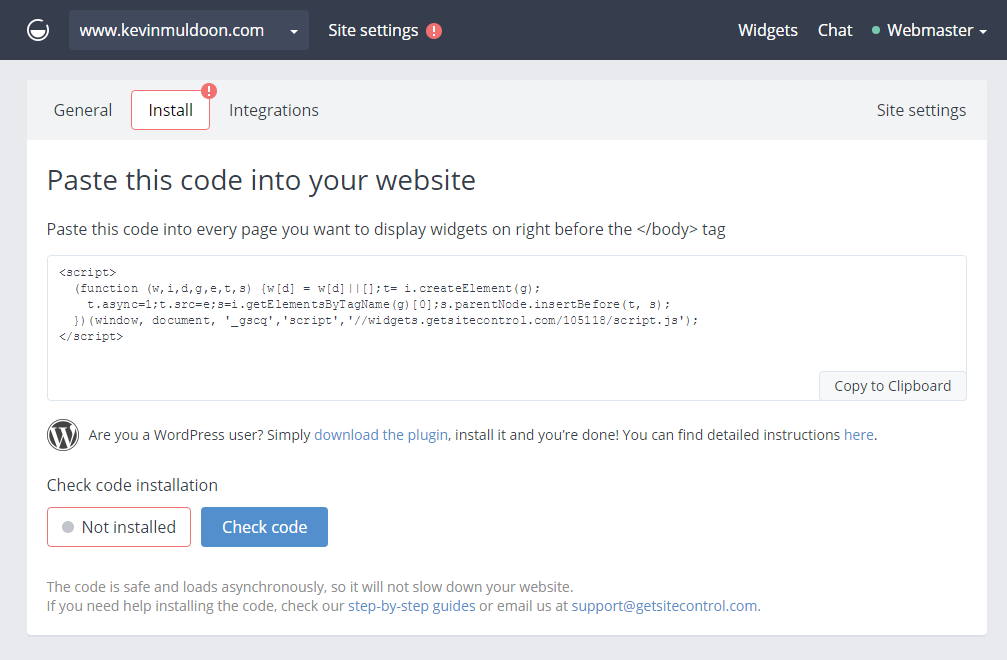
Be sure to sign in to GetSiteControl via your Wprd{ress admin area so that the integration code is successfully added to your website.
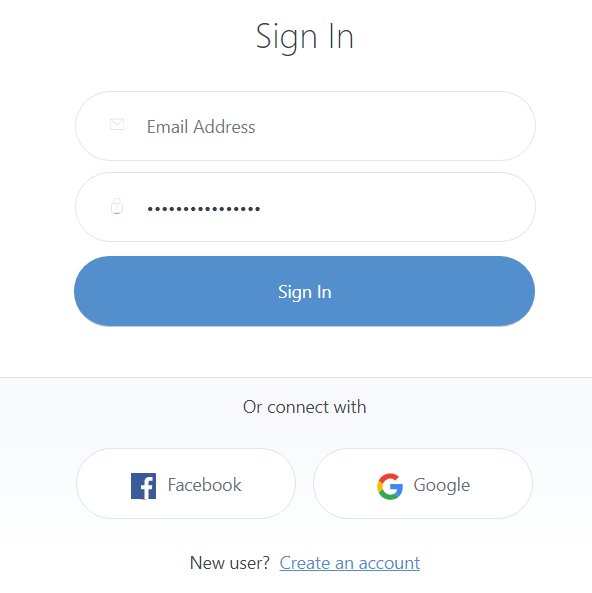
Once you have signed in, the plugin will show you a link to your account dashboard on the GetSiteControl website.
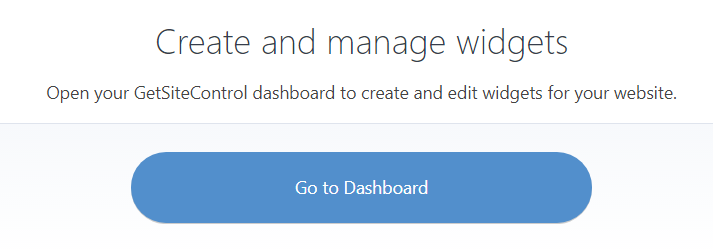
I appreciate the fact GetSiteControl has added a WordPress plugin to simplify the process of integrating their service into websites, but if the WordPress plugin has no settings or options after logging in, why is it being linked at the top level of the WordPress admin menu instead of being hidden away under Tools or Settings?
This is why WordPress plugins such as Admin Menu Editor are necessary.

Slack and all the email marketing services that integrate with your subscription forms, contact forms, and surveys, can be set up on the integrations page.
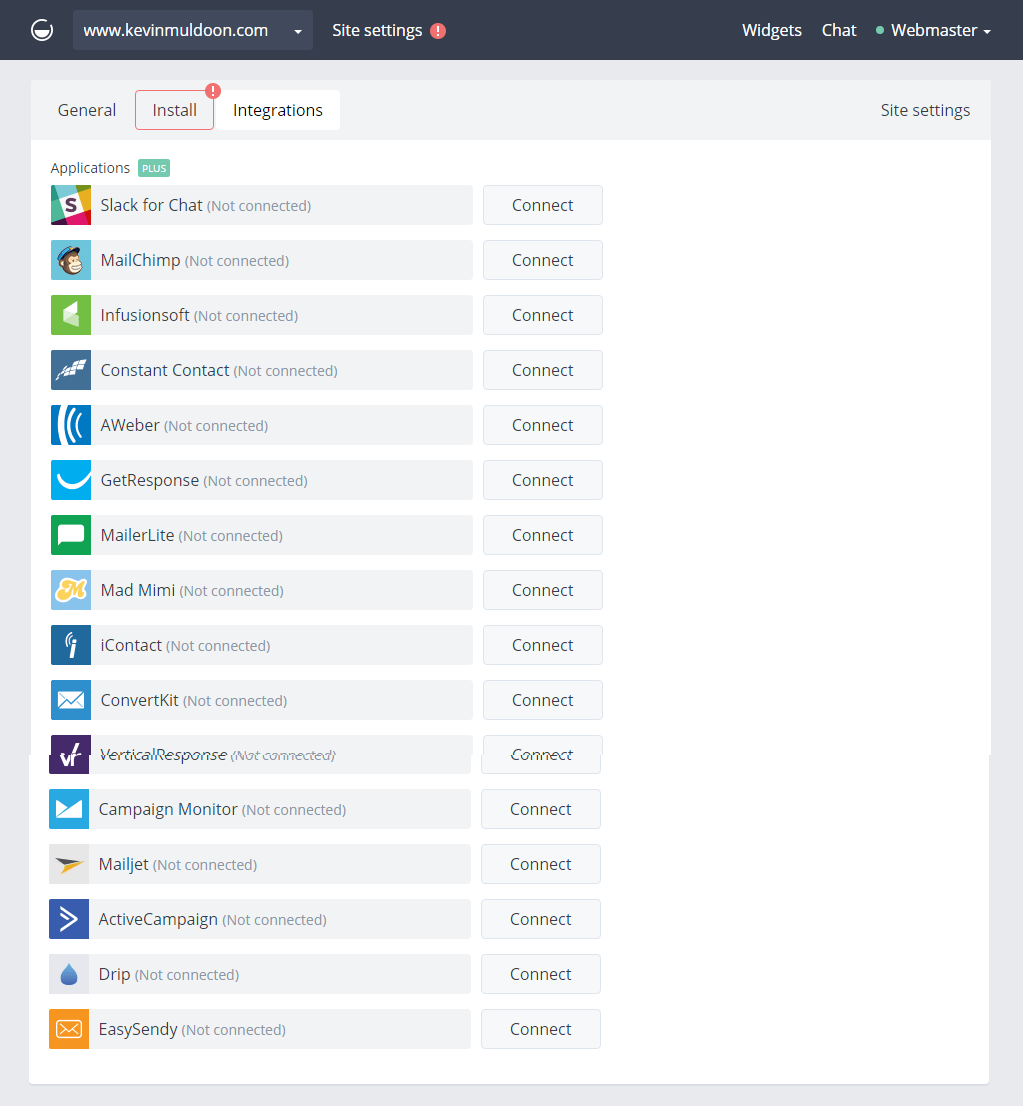
The webmaster menu at the top right-hand side of each page allows you to access your profile, chat settings, website management page, users, billing, and the GetSiteControl affiliate program which pays 30% recurring commissions.
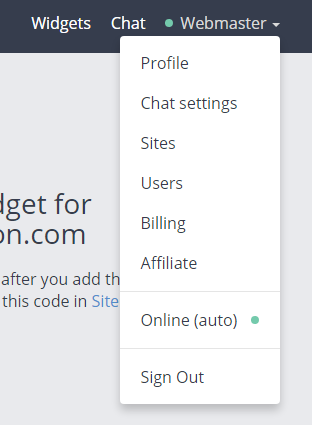
Creating Widgets with GetSiteControl
Once you have added the integration code to your website, you can create widgets.
Simply select the type of widget you want to create.
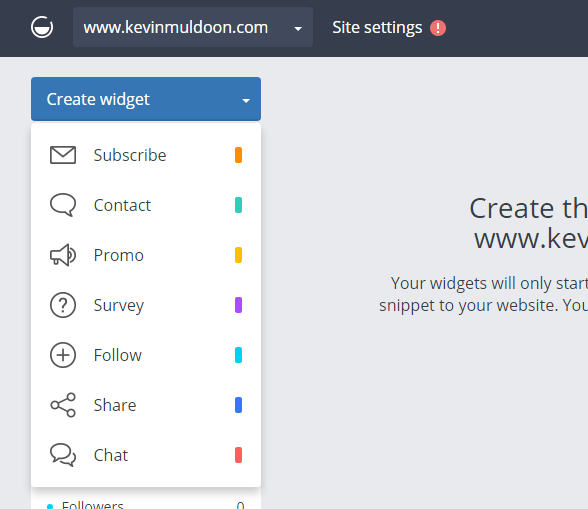
All widgets have the appearance tab, content tab, behaviour tab, and targeting tab. The form widgets also have a success page tab for the thank you page and an integrations tab for integrating email services. An integrations tab is displayed for the chat widget as well so that you can integrate Slack.
In the appearance tab you can select the position of the widget and change the colours and font. Those who opt for the GetSiteControl plus plan can also upload an image.
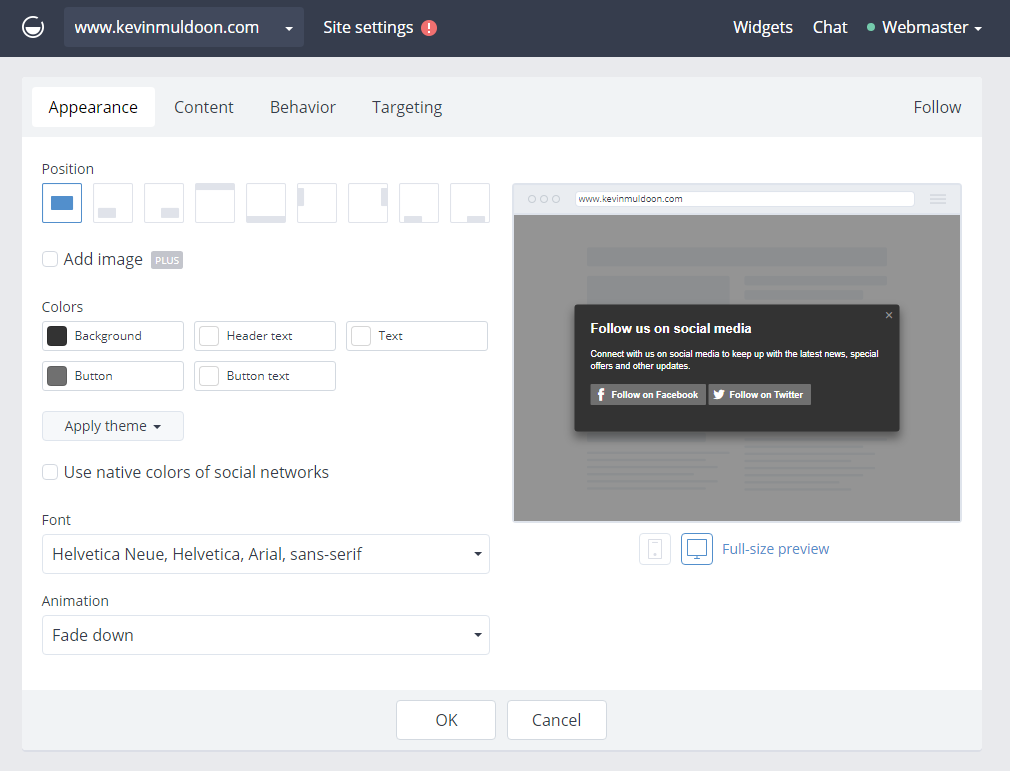
The content of your widget can be modified in the content tab. This tab will change according to which widget you are creating.
With the follow widget, for example, you can change the title and description and add social media follow buttons for Facebook, Twitter, Google+, YouTube, LinkedIn, Instagram, Tumblr, Pinterest, and VK. In contrast, with the subscribe widget you can change the title and the name of the form fields.
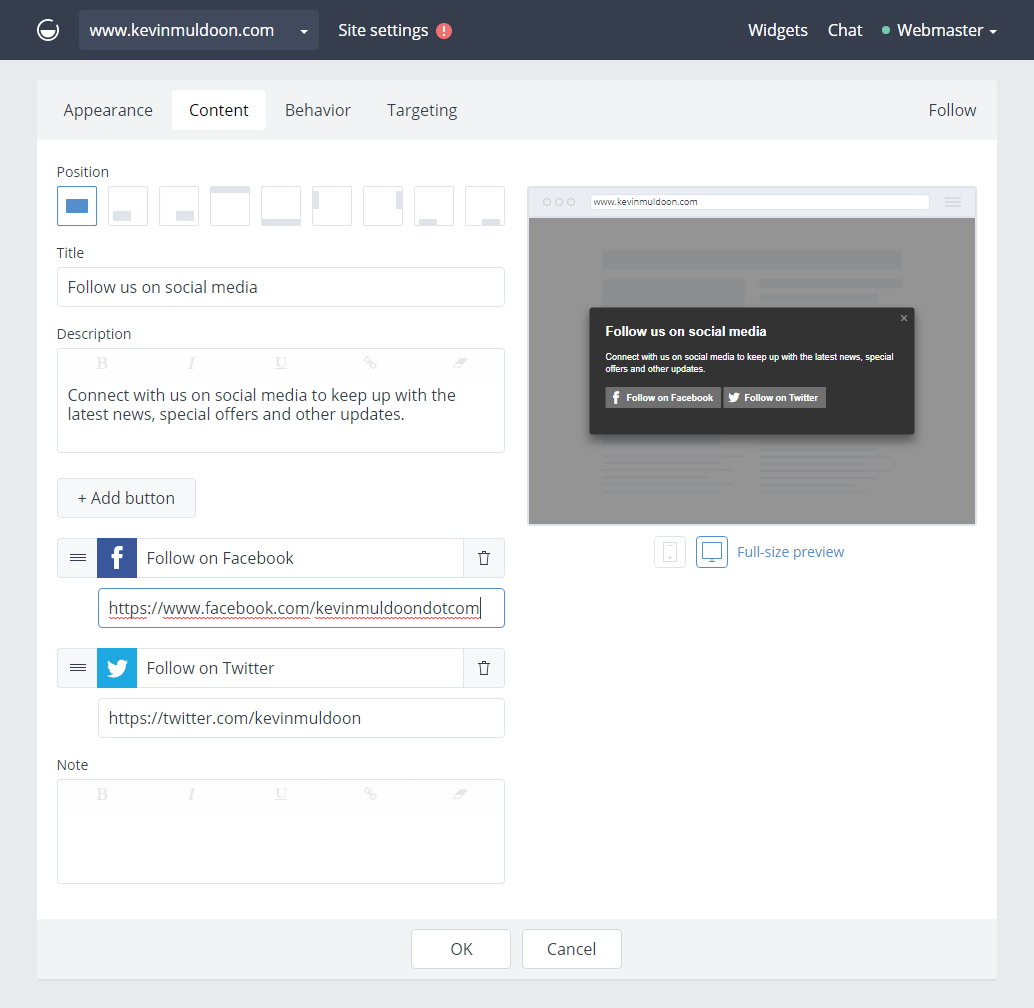
GetSiteControl lives up to its name and gives you full control over how and when widgets are displayed. The more conditions you put in place, the more precise you can be about when widgets are loaded.
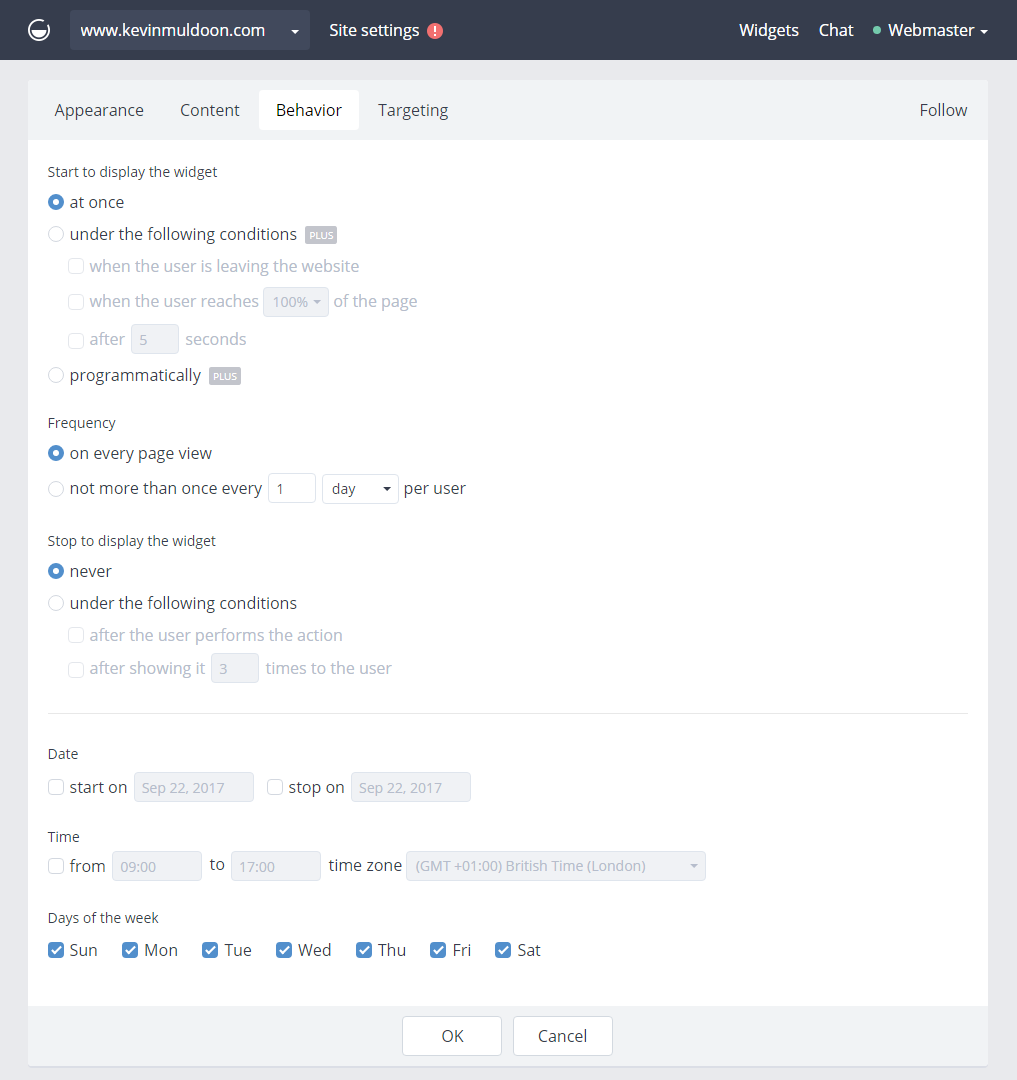
You can opt to include or exclude visitors from seeing each widget using a wide number of conditions. This includes browsers, devices, referrers, and locations.
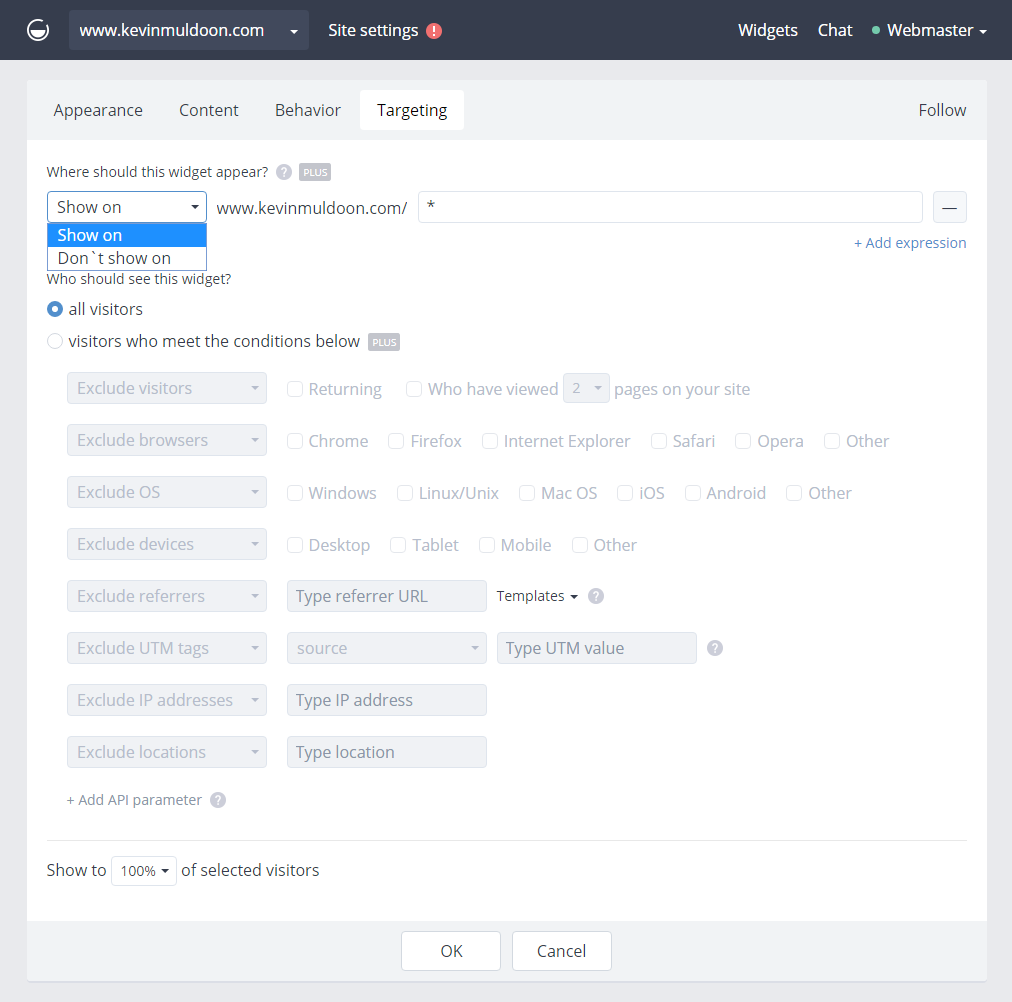
When a visitor has completed a form, you can thank them and then choose to do nothing, close the widget, or redirect them to another page.
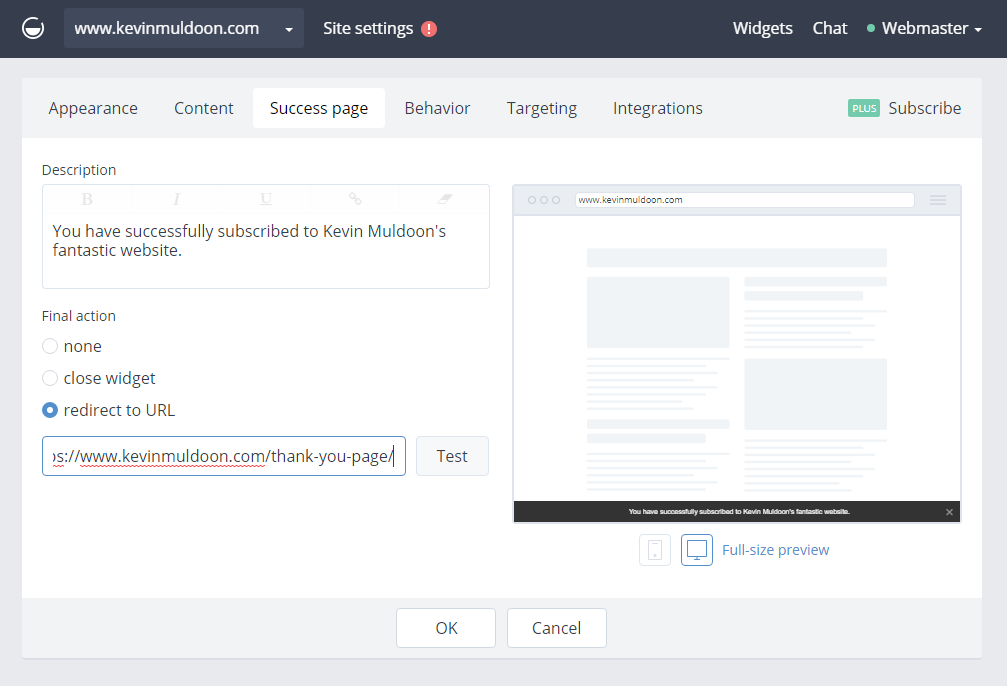
The beauty of GetSiteControl is that each widget is unique. This is never more apparent that in the integrations tab as you can integrate each widget with a different email service.
You could, for example, link your subscribe widget to your MailChimp account, your contact form to your Aweber account, and your chat widget to your Slack account. The choice is yours.
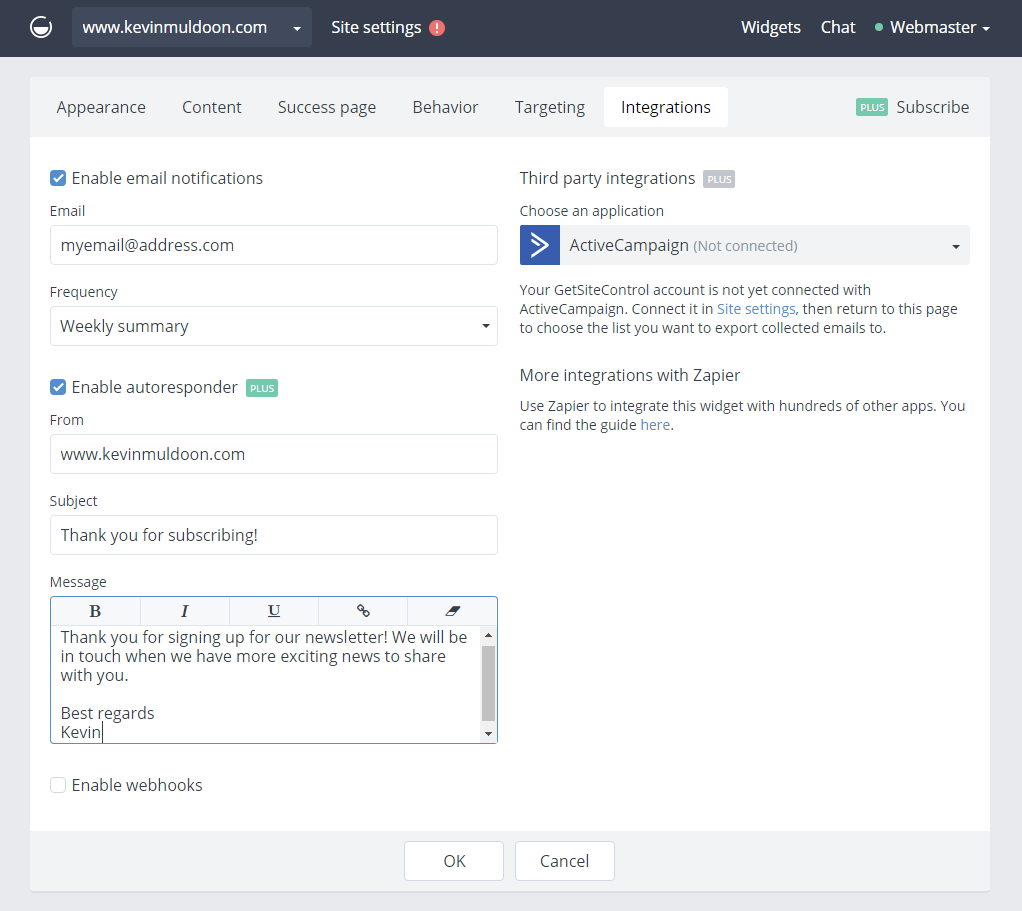
Once you have saved your new widget, you will be asked whether you want to activate it on your live website or keep it deactivated.
Keeping a widget deactivated is useful if you want to create multiple widgets and then activate them all at the same time.
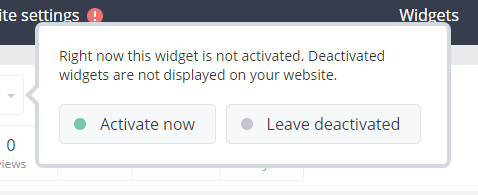
If you rush through the process of styling your widget, you may end up with something dull and uninspiring.
Make the effort and spend a few seconds modifying the appearance of your widget and the results speak for themselves. GetSiteControl makes this simple with its combination of pre-made colour schemes and colour wheel.
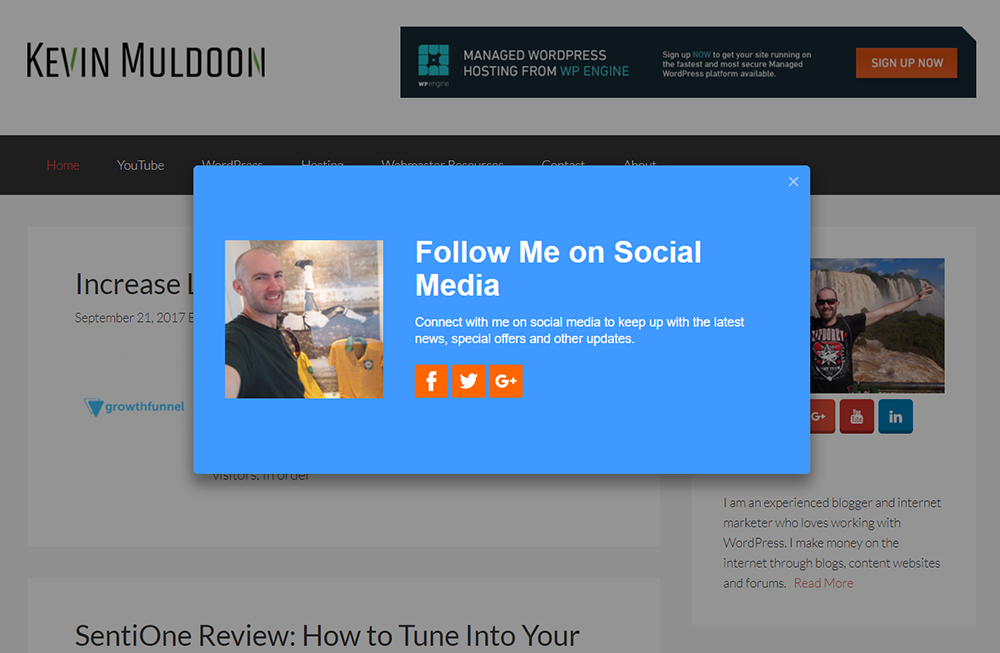
GetSiteControl is very easy to use, but what really surprised me was how quick the whole system is. When you make a change to your widget, those changes are applied to the widget on your website instantly. There is no delay whatsoever.
The dashboard gives you quick stats about your widgets and lets set up A/B tests.

Detailed statistics are provided for every widget on your website. This helps you analyse the performance of your widgets and see what is working and what is not.
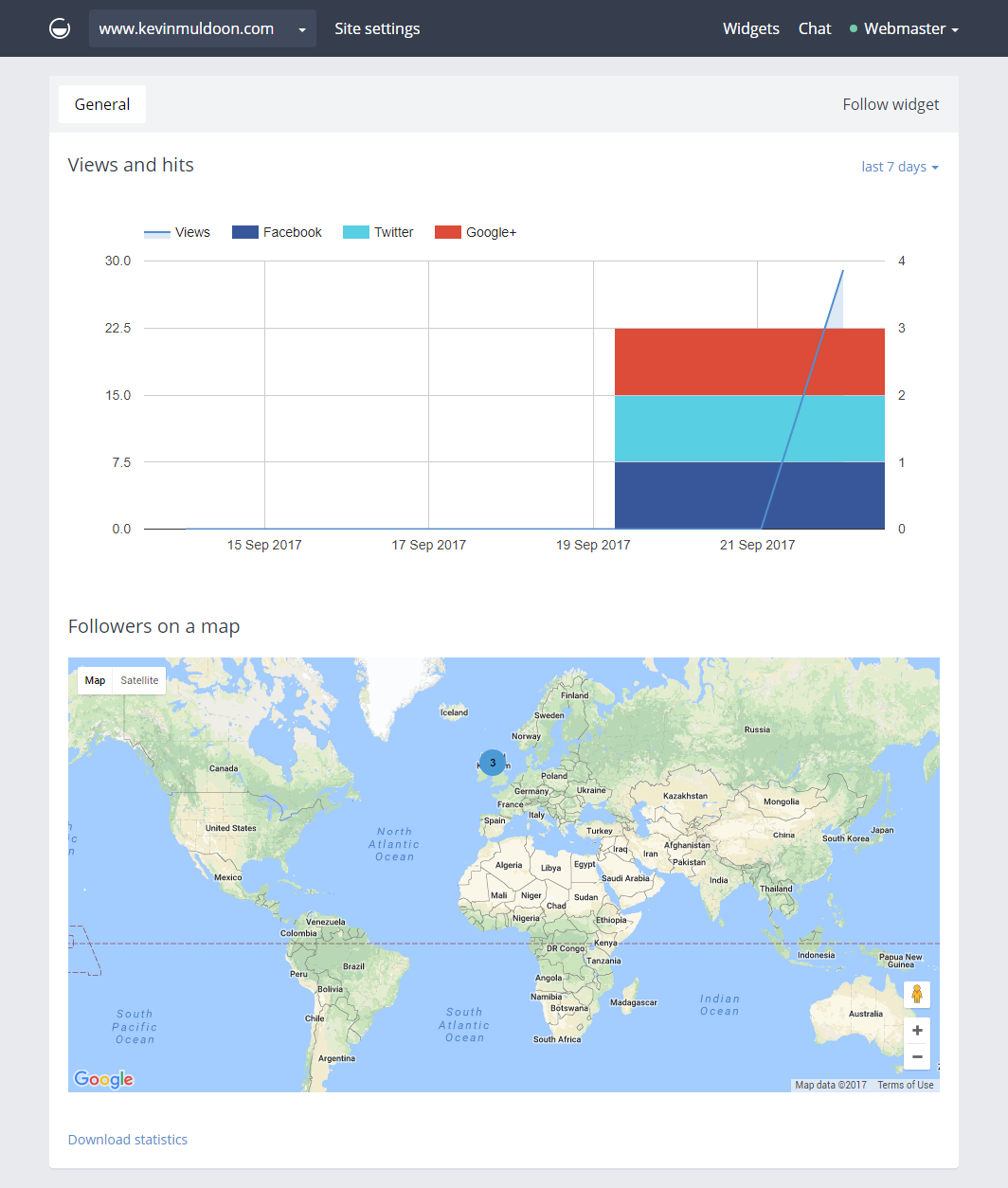
I have documented how the GetSiteControl service works, but I doubt any of you would have to reference this article for help as the service is very easy to use. The user experience has clearly been made a priority by developers as everything is easily understood and simple to navigate.
Pricing
GetSiteControl has a fair pricing scheme.
Their free plan is suitable for any website that receives less than 50,000 views per month. This plan offers all widget types, unlimited widgets, custom colours, frequency settings, scheduling, real-time statistics and mobile responsive widgets
The GetSiteControl plus plan starts at $19 per website. The price decreases to $15 per website for two websites and $13 per website for any subsequent websites. Therefore, one website will cost you $19 per month, two websites costs $30, three websites costs $39, four websites costs $52, and so on. Each website is allowed up to 500,000 views.
In addition to all the features of the free plan and the ability to manage multiple websites, the plus plan offers branding removal, integrations, custom images, targeting, start triggers, exit popups, A/B testing, survey logic and branching, and autoresponders.
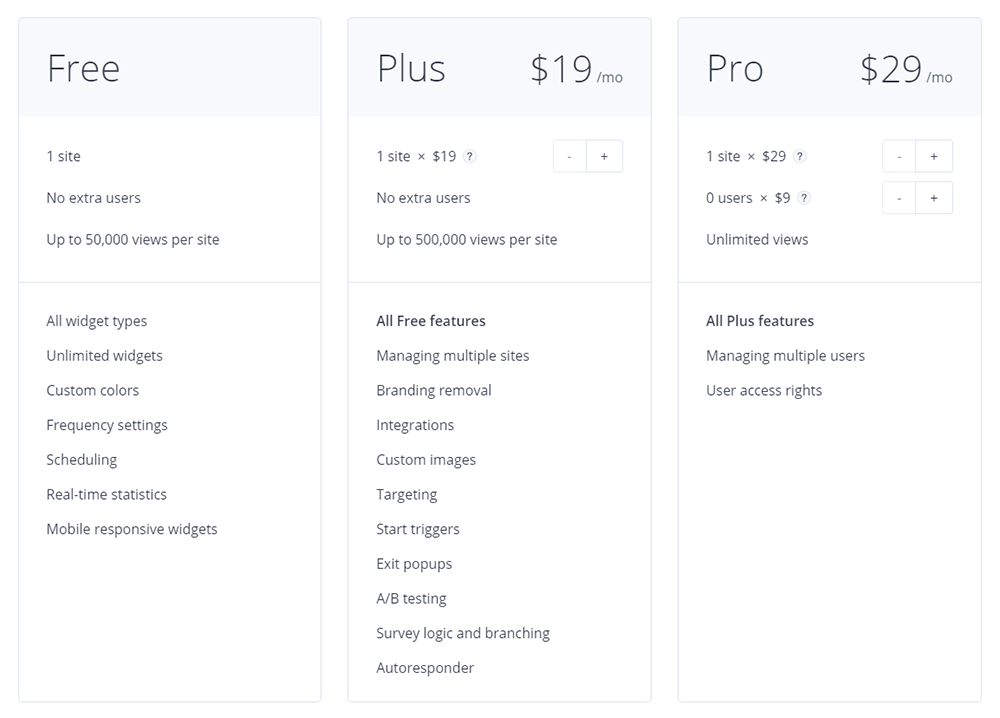
The pro plan offers all the features of the free and plus plans, but also gives you the option of adding additional users and managing the permissions of those users.
It is priced at $29 per month for one website, $46 for two websites, and an additional $20 for each additional website. Any additional users, outwith the included admin account, are priced at an additional $9 each.
You can save 20% off the cost of the plus and pro plans if you opt to pay on a yearly basis instead of monthly. No refund is required since the service can be tried free of charge, though GetSiteControl does offer nonprofit organisations free access to their plus plan.
Without a doubt, with their starter plan being free and plus plan starting from $19 per month, GetSiteControl has been fair with its pricing; however I believe GetSiteControl have got the pricing of their pro plan set up wrong.
The cheapest pro plan option is $29 per month, however that does not include any additional users and offers the exact same features as the lower priced plus plan that costs $19 per month. The main benefit of the the pro plan is that it removes the 500,000 views restriction.
Charging more for an unlimited number of views is understandable, but it is a shame that website owners who do not generate a lot of traffic are being forced to pay more in order to add additional users.
Consider a website owner who pays for the plus plan and currently receives 20,000 views or even 300,000 views per month. They would be forced to pay more to add an additional user to their website.
- One Website – $19 with no additional users. $38 per month by adding one additional user.
- Two Websites – $30 with no additional users. $55 per month by adding one additional user.
- Three Websites – $39 with no additional users. $69 per month by adding one additional user.
In the above scenarios you are effectively being charged an additional $19 for one user if you have one website, an additional $25 if you own two websites, and an additional $20 if you own three websites. Adding one additional user should only cost $9, not $19, $25, or $20.
A more sensible setup would be to allow additional users to be added to the plus plan at $9 per month. That is a more transparent pricing policy and doesn’t force people to upgrade to the highest plan unless they justify it through having over 500,000 views.
Final Thoughts
It was hard not to be impressed by GetSiteControl. The service is free to use up to 50,000 views and only costs $19 per website if your website receives more traffic.
The service can be used to increase your social media presence and increase engagement with your website visitors and long term customers. Throw in support for Slack and all major email marketing services and you have a practical solution that is easy to recommend.
I encourage you to try it out and see what GetSiteControl can do for yourself.
Good luck.
Kevin


